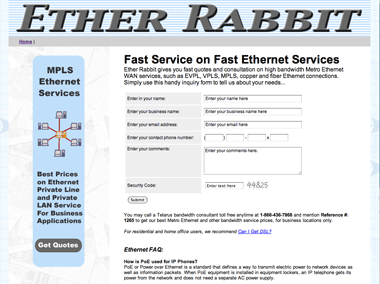
Tuesday’s ECJ
judgment in the three Google France cases isn’t just important for trade mark law. It’s news for copyright too as it addresses the hosting defence of the
E-Commerce Directive. The hosting defence limits liability for copyright as well as trade mark infringement. It has therefore been taken as a defence for a wide range of websites for copyright liability, particularly UGC sites, such as YouTube, Facebook etc.
The hosting defence
Article 14 of the E-Commerce Directive states that the provider of an ‘information society service’ that consists of the storage of information provided by a user of the service is not liable for illegal information, so long as the provider didn’t authorize, control or know about the information and removes it promptly when alerted to it. An ‘information society service’ is defined as any service normally provided for remuneration, at a distance, by electronic means and at the individual request of a recipient of the service.
Recital 42 says the service provider’s activity must be limited to a technical, automatic, passive process of operating a communication network over which third-party information is transmitted (or temporarily stored for the sole purpose of making the transmission more efficient).
Areas of confusion
During the Noughties, questions have been raised over who qualifies as an ‘information society service provider’ and what activities can be described as ‘storage of information’. Does Recital 42 really apply to hosts, or just conduits and caching?
Despite the fact that the hosting defence is so heavily relied upon, this is the first ECJ judgment and the defence has received relatively little consideration by the UK courts, though Continental courts have explored it. In the UK it has been successfully relied upon in libel cases: for comments posted on Usenet newgroups (
Bunt v Tilley) and bulletin boards on websites (
Karim v Newsquest). Google’s search engine was held not to be a host (
Metropolitan International Schools v Designtechnica). There appears to be a public consensus that displaying third-party content on websites passes the hosting test – though many sites are not ‘normally provided for remuneration’.
Rather than analysing such simple phenomena, the ECJ finds itself jumping in at the deep end with more complex site-user interfaces: AdWords in the Google France cases and, in a year or two, eBay in
L’Oréal v eBay.
The hosting defence in the Google France cases
In the Google cases, the question was: if Google’s use of AdWords does not constitute a trade mark infringement, does Google benefit from the hosting defence? It would appear that the purpose of the question was: if Google was not found liable for infringement itself, could it be liable for the infringement by a party that had paid for an AdWord? The ECJ held that Google’s use of trade marks is not an infringement. However, because advertisers that pay for AdWords are potentially liable, if Google were to have secondary liability for an advertiser’s infringement, would Google be shielded by the hosting defence?
The Court took the view that AdWords is an ‘information society service’. Moreover, AdWords fulfils the criterion of being a service limited to operating a communication network over which information is transmitted. Was AdWords ‘storage of information’ provided by the recipient of that service?
Last September the Advocate General said that AdWords nominally fulfilled the notion of hosting but should not benefit from the defence – it was not a ‘neutral information vehicle’ because of Google’s relationship with the advertisers. The ECJ, however, said that Google’s financial relationship with advertisers is not relevant.
In the view of the Court, Google could be said to be ‘storing data’ because it was holding it in its servers’ memory. However, to benefit from the hosting defence the defendant’s activity must be ‘ “of a mere technical, automatic and passive nature”, which implies that that service provider “has neither knowledge of nor control over the information which is transmitted or stored”.’ The ECJ described such a role as ‘neutral’ and not ‘an active role’. The Court has left it to the national court to determine if Google AdWords fits this description but relevant points include: ‘the role played by Google in the drafting of the commercial message which accompanies the advertising link or in the establishment or selection of keywords’ – the terms of the contract between Google and advertisers would help determine this. Perhaps there is a reference here to Google's
Keyword Tool, which advertisers can use to choose keywords? If so, the Keyword Tool could be said to play a role that is both ‘active’
and ‘neutral’ in the sense that it is automated!
Storage
The Court held that Google ‘stores’ third-party data by holding it in the memory on its servers. This is true – but doesn’t AdWords go beyond this?
The storage of third-party data for AdWords is part of a process (cf. the discussion of eBay in
L’Oreal para 437). Yes, Google holds the advertisers’ copy unchanged but that’s not all it does. It displays that copy at a given time, in a certain order and for a particular purpose. If I put a bicycle wheel on a shelf without altering it, then I am storing it. If I put it on a bicycle and ride it, I may not have altered the wheel, but ‘storage’ would not be the first word that comes to mind to describe what I have done. The website may not be changing the copy but it may be performing other activities around it: processing it, employing it, deploying it.
Which is not to say that the ECJ’s decision to base immunity from liability on ‘neutrality’ isn’t fair.
Lessons
Has this interpretation of the Directive helped clear things up for other sites?
Context doesn’t matter: the fact that it is acceptable for a host’s activities and deployment of third-party data to stretch far beyond static storage will come as welcome news for many, such as eBay. Similarly, if AdWords passes the test of being an activity limited to operating a communication network, then that must let a multitude of UGC sites off the hook.
Money doesn’t matter: receiving individual payments from users doesn’t weaken the defence – it would have trashed eBay if it had.
‘Storage’: Google ticked this box by holding data on its servers. What about parties that don’t have servers? The question of how freely ‘storage’ can be interpreted remains unclear.
‘Information society service provider’: well at least we now know for sure that it
can include a website, not just ISPs. However, AdWords really can justify the claim that it is a ‘service’ and is ‘normally provided for remuneration’ – what about blogs and message boards that are free?
‘Lack of control’: this has emerged as central but hazy. It may suggest that sites should be wary of software that guides users’ choices? UGC is often produced through an interaction between users’ input and sites’ creative tools (examples
here and
here).
Under Article 21 of the E-Commerce Directive, the European Commission is obliged to re-examine the Directive every two years, proposing changes if necessary to adapt it to legal, technical and economic developments. Unfortunately only one report was ever produced. Another was
planned for last year but has not yet materialized. When I asked why, the Commission told me it was its ‘prerogative’ to decide whether to produce reports.
The AdWords judgment has answered a few of the questions, but it looks like we’ll have to carry on making up the rules as we go along.
 FCC Chairman Lowon B. Andwidth explained that the Commission just completed an intensive study of Internet usage and found that the Twitter service is growing at such an astonishing rate that it will soon devour all available bandwidth. “While it is bad enough that Twitter will bring web browsing, video streaming, text messaging and email to a halt,” said Mr. Andwidth, “a far worse situation will occur when Twitter users have to take a number and get in line to post their tweets. I don’t want to be in Washington when that mob of anti-social networkers descends on Capitol Hill.”
FCC Chairman Lowon B. Andwidth explained that the Commission just completed an intensive study of Internet usage and found that the Twitter service is growing at such an astonishing rate that it will soon devour all available bandwidth. “While it is bad enough that Twitter will bring web browsing, video streaming, text messaging and email to a halt,” said Mr. Andwidth, “a far worse situation will occur when Twitter users have to take a number and get in line to post their tweets. I don’t want to be in Washington when that mob of anti-social networkers descends on Capitol Hill.”















 Network security has become a hot topic in recent years. We’re all familiar with the constant barrage of viruses, phishing schemes, hacking and other criminal activities on the Internet. You don’t need a connection to the Internet to worry about electronic security. Any company or organization with a computer network is a target for those who think they can benefit from compromising it. No amount of physical security protects your network once it leaves your premises. But to do business today, you need connections to multiple office locations, factories, warehouses, customers and suppliers.
Network security has become a hot topic in recent years. We’re all familiar with the constant barrage of viruses, phishing schemes, hacking and other criminal activities on the Internet. You don’t need a connection to the Internet to worry about electronic security. Any company or organization with a computer network is a target for those who think they can benefit from compromising it. No amount of physical security protects your network once it leaves your premises. But to do business today, you need connections to multiple office locations, factories, warehouses, customers and suppliers.










 So, what’s WiMAX and what is the difference between 3G and 4G? WiMAX is an international standard for wireless broadband service. It’s been described as WiFi with a city-wide coverage area. Technically there are a lot of differences between WiFi and WiMAX, but that’s probably how you’ll use it.
So, what’s WiMAX and what is the difference between 3G and 4G? WiMAX is an international standard for wireless broadband service. It’s been described as WiFi with a city-wide coverage area. Technically there are a lot of differences between WiFi and WiMAX, but that’s probably how you’ll use it.
